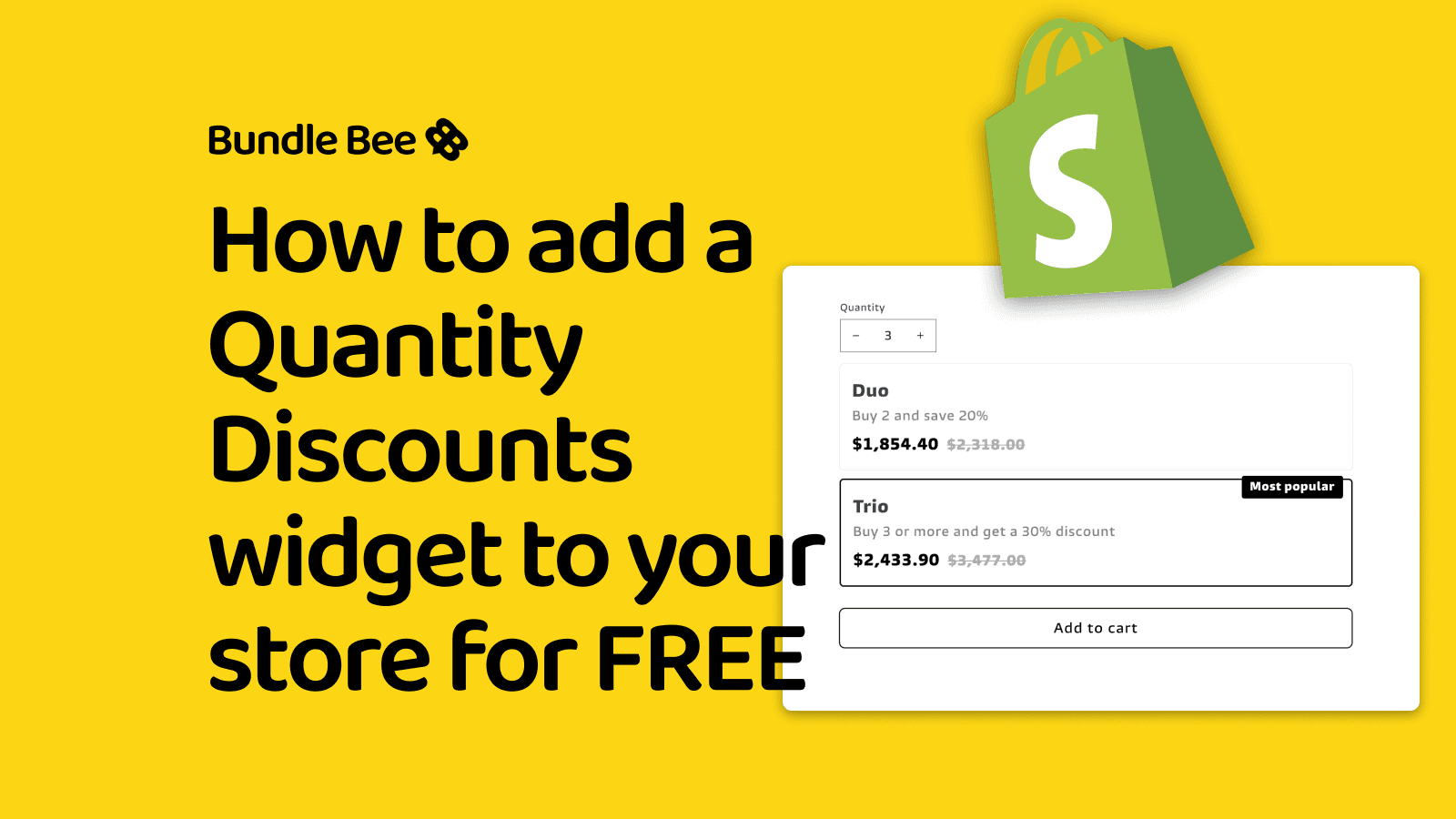Boost Your 2024 Shopify Sales with Conversion Optimization
Looking to boost your Shopify sales in 2024? Conversion optimization is key. Learn how to turn more visitors into buyers without increasing marketing spend.
Understanding Shopify Conversion Optimization
Shopify conversion optimization is all about turning more of your store visitors into buyers. It's crucial for boosting sales, especially as we step into 2024.
Why focus on this? Simple. It increases revenue without spending more on marketing. By fine-tuning your store's experience, you encourage more purchases from existing traffic.
Here's what it means for your Shopify store:
Increased Revenue: Boost sales without extra marketing costs.
Better Customer Experience: Make shopping smoother, leading to happier customers.
Improved Profitability: More sales from the same traffic means higher profits.
Optimizing conversion rates isn't just a sales booster. It also enhances the overall shopping experience, which is essential for customer satisfaction and retention.
By focusing on conversion optimization, you're setting your store up for success in 2024 and beyond.
Why Conversion Rates Matter
Conversion rates are key for Shopify stores. They show how well your store turns visitors into buyers, directly impacting sales and revenue. A high conversion rate means you're making the most of your current traffic, keeping costs down while boosting profits.
Improving conversion rates is often more efficient than increasing traffic. Why spend more on ads when you can enhance your store's effectiveness? By focusing on conversion, you increase sales without extra marketing spend. For Shopify store owners looking to refine their strategies, exploring A/B testing for Shopify discounts can provide valuable insights into optimizing discount offers and improving conversion rates.
Customer retention also plays a big role. Happy customers are likely to return and purchase again, further enhancing revenue. Keeping existing customers engaged is often easier and more cost-effective than acquiring new ones. Implementing tools like Shopify volume discounts can encourage repeat purchases and boost customer loyalty.
Here's why conversion rates are essential:
Sales Impact: Directly influences sales and revenue.
Cost Efficiency: Increases profits without additional ad spend.
Customer Retention: Encourages repeat purchases and loyalty.
Maximized Traffic: Makes the most out of existing visitors.
Understanding the impact of conversion rates helps you set clear goals for your business. By optimizing these rates, you're not just boosting sales but also enhancing overall performance and customer satisfaction.
Benchmarking Your Conversion Rates
Benchmarking conversion rates is key to understanding how your Shopify store performs. Knowing average rates helps set realistic goals for improvement.
For Shopify stores, a good conversion rate tops 3.3%, putting you in the top 20%. Top performers often reach rates over 4.7%. These numbers vary by industry and product type.
Different sectors have unique benchmarks:
Fashion and Apparel: Typically 2-2.5%
Health and Beauty: Usually 3-3.5%
Home and Garden: Often 1.5-2%
Compare your conversion rates to these benchmarks. This highlights areas for improvement. If you're below these numbers, try strategies like quantity discounts or bundle offers.
Knowing your position helps set achievable goals for 2024. Focusing on improving conversions makes your current visitors more likely to buy.
Aiming higher maximizes your store's potential. Keep these benchmarks in mind as you refine your strategies. They'll guide you to better results.
Factors Impacting Conversion Rates
Shopify conversion rates hinge on several key factors. Understanding these can help you boost your store's performance.
Start with site performance: A fast-loading site keeps visitors engaged and less likely to bounce. Speed is crucial.
Next, focus on mobile responsiveness: Ensure your store looks great and functions well on mobile devices. Most shoppers browse on their phones, so this is essential.
Personalization is also vital. Tailor the shopping experience to individual preferences to increase engagement. Personalized recommendations can lead to higher sales.
Don't forget customer service: Offer quick and helpful support. Accessible customer service builds trust and encourages purchases.
SEO plays a significant role. Optimize your site to rank higher in search results, driving more organic traffic.
Key elements like site design matter too. A clean, intuitive layout makes shopping easy and enjoyable.
Trust badges and customer reviews build credibility. Shoppers want assurance they're buying from a reliable source.
Here's a quick list to remember:
Site Performance: Ensure fast loading times.
Mobile Responsiveness: Optimize for mobile devices.
Personalization: Customize the shopping experience.
Customer Service: Provide excellent support.
SEO: Improve search engine rankings.
Site Design: Keep it clean and intuitive.
Trust Factors: Use badges and reviews to build trust.
Identifying and improving these areas can enhance your conversion rates, leading to better sales and satisfied customers.

Optimizing Your Homepage
Your homepage is the first impression visitors get, so it’s key to make it count. Focus on mobile optimization. Most shoppers use their phones, so ensure your site looks great and runs smoothly on mobile. Simple design helps too. A clean layout makes it easy for visitors to find what they need.
Highlight your top products and promotions. Feature these prominently to catch attention. Use welcome banners to engage visitors right away. They can introduce special offers or showcase new arrivals.
Testimonials are powerful. Display customer reviews to build trust. People like to see proof that others love your products. It reassures potential buyers and encourages them to make a purchase.
Here’s a quick checklist:
Mobile Optimization: Ensure your site is mobile-friendly.
Simple Design: Keep the layout clean and intuitive.
Top Products: Feature bestsellers and promotions.
Welcome Banners: Engage visitors with current offers.
Testimonials: Use reviews to build trust.
By focusing on these elements, you’ll create a homepage that not only looks good but also drives conversions.
Enhancing Product Pages
Enhancing product pages is crucial for boosting conversions. Start with high-quality images: Clear, detailed visuals help customers see exactly what they're buying. Multiple angles and zoom features provide a better understanding of the product.
Detailed descriptions are essential. Highlight features and benefits in a way that speaks directly to your audience. Use simple language and make sure the key points stand out.
Creating urgency can be effective. Use scarcity tactics like "only a few left" to encourage quick decisions. Limited-time offers can also drive immediate action.
Social proof is powerful. Display reviews and ratings prominently. Seeing positive feedback from others builds trust and influences buying decisions.
Offering free shipping can tip the scales in your favor. Many shoppers abandon carts due to shipping costs, so consider absorbing this to boost sales.
Here's a quick list to optimize your product pages:
High-Quality Images: Use clear, detailed visuals.
Detailed Descriptions: Highlight features and benefits.
Scarcity Tactics: Use limited stock messages.
Social Proof: Display reviews and ratings.
Free Shipping: Offer to reduce cart abandonment.
Crafting compelling product pages involves focusing on these elements to turn visitors into buyers. Make sure every detail aligns with your brand and speaks to your audience.
Streamlining the Checkout Process
Streamlining your checkout process is key to reducing cart abandonment and boosting conversions. A smooth, hassle-free experience makes customers more likely to complete their purchase.
Offering a guest checkout option is essential. Not everyone wants to create an account. Letting customers buy without signing up removes a barrier to purchase.
Varied payment options are crucial. Different shoppers have different preferences, so include methods like credit cards, PayPal, and digital wallets. The more options, the better.
Use progress bars to show checkout steps. This transparency reassures customers by letting them know how close they are to finishing.
Clearly display return policies and shipping offers. Customers feel more confident buying when they know they can return items easily and see shipping costs upfront.
For those interested in optimizing their checkout further, explore our detailed guide on integrating Releasit COD and Bundle Bee for Shopify, which can enhance conversion rates by combining cash-on-delivery forms with quantity discounts.
Here’s how to enhance your checkout:
Guest Checkout: Simplify purchases by not requiring accounts.
Payment Options: Offer diverse methods to suit everyone.
Progress Bars: Guide customers through checkout stages.
Return Policies: Make them visible and easy to understand.
Shipping Offers: Highlight any deals or free shipping.
By focusing on these elements, you'll create a checkout process that encourages customers to complete their purchases, increasing your conversion rates.
Improving Search and Navigation
Enhancing search and navigation on your Shopify store can significantly boost conversions. Auto-suggestions in search are vital. They guide customers quickly to what they’re looking for, reducing friction and improving user experience. When shoppers find products faster, they’re more likely to purchase.
Effective category organization is another key element. Well-structured categories help customers browse easily, leading to higher engagement and sales. Group similar products together and use clear labels to guide shoppers seamlessly through your offerings.
Optimizing these elements can create smoother shopping journeys:
Auto-Suggestions: Speed up searches with helpful prompts.
Clear Categories: Organize products logically for easy browsing.
Intuitive Layout: Simplify navigation for a better user experience.
Improving search and navigation ensures customers find products effortlessly, enhancing satisfaction and boosting sales. These tweaks turn casual browsing into buying, making a big difference in your store’s performance.
Leveraging Offsite Strategies
Retargeting ads and cart recovery emails are powerful offsite strategies to boost your Shopify sales. They help re-engage potential customers who’ve shown interest but haven’t made a purchase yet.
Retargeting ads remind visitors of the products they viewed. These targeted ads can appear on social media or other websites, nudging them back to your store. Personalizing these ads with specific product recommendations increases their effectiveness.
Cart recovery emails are crucial too. They reach out to customers who abandoned their carts, offering a gentle nudge to complete their purchase. Including personalized messages or limited-time discounts can make these emails more enticing.
Here's how to make these strategies work:
Retargeting Ads: Use personalized product suggestions to re-engage visitors.
Cart Recovery Emails: Send timely follow-ups with personalized content.
Discount Incentives: Offer special deals to encourage conversions.
Timely Follow-Ups: Ensure messages are sent promptly to maintain interest.
Using these offsite tactics effectively can capture lost sales and improve conversion rates. They keep your store in potential customers’ minds, encouraging them to return and complete their purchases.

Tools for Conversion Optimization
Boosting your Shopify sales in 2024 involves using the right tools for conversion optimization. Tools like Google Analytics, Hotjar, and OptinMonster help you understand how visitors interact with your store.
Google Analytics provides detailed data to analyze visitor behavior. It helps identify which pages perform well and where improvements are needed.
Hotjar offers heat maps and session recordings. These features show where users click, scroll, and spend time, revealing areas for enhancement.
OptinMonster aids in capturing leads and reducing cart abandonment. It creates personalized pop-ups and offers to engage visitors.
Abandoned cart emails are vital. They remind customers of items left behind, encouraging them to complete purchases. These emails can recover significant revenue by bringing shoppers back.
For Shopify store owners looking to enhance their sales strategies, integrating Bundle Bee volume discounts can be a game-changer. This tool provides step-by-step instructions to optimize your product pages and boost customer engagement with volume pricing.
Here’s a quick rundown:
Google Analytics: Analyze visitor data for performance insights.
Hotjar: Use heat maps to see user interaction.
OptinMonster: Create targeted pop-ups to capture leads.
Abandoned Cart Emails: Recover lost sales with reminders.
Leveraging these tools provides valuable insights and helps make informed decisions to boost your store's conversion rates. They offer practical ways to enhance user experience and increase sales.
The Role of A/B Testing
A/B testing is crucial for refining your Shopify store's conversion strategies. It involves comparing two versions of a webpage element to see which performs better with your audience. Testing headlines, CTAs, and images can reveal what resonates most with customers.
Understanding your audience's preferences is key. A/B testing provides insights by showing real-world reactions to different elements. This helps in crafting a more engaging shopping experience.
To ensure reliable results, focus on:
Sample Size: Use an adequate number of participants to get significant data.
Testing Duration: Allow enough time to gather meaningful insights.
Element Variation: Test one element at a time to pinpoint what affects conversions.
A/B testing isn't just about increasing conversion rates. It enhances the overall user experience by aligning your store's design and messaging with customer preferences.
Beehive Apps offers tools that can help streamline this process. Our apps integrate seamlessly with Shopify, allowing for easy implementation of changes based on A/B test results. For those looking to enhance their Shopify store's performance during peak shopping seasons, such as Black Friday Cyber Monday, consider exploring essential Shopify apps that optimize sales. By leveraging these insights, you refine strategies and optimize your store's performance.
Recap and Next Steps
To boost Shopify sales in 2024, focus on conversion optimization. Here are key strategies to turn visitors into loyal customers.
Conversion rates increase revenue without extra marketing costs. Compare your performance to find ways to improve. Use these insights to boost your conversion rates.
Prioritize site speed and personalization. A page that loads in under 3 seconds boosts engagement. Build trust by displaying reviews and trust badges prominently - they're your digital word-of-mouth.
Enhance your homepage and product pages with quality images and clear descriptions. Simplify checkout. Offer guest checkouts and multiple payment options - we've all abandoned a cart due to a complex checkout process.
Deploy retargeting ads and cart recovery emails to remind shoppers about their unfinished purchases. Use A/B testing to refine your store based on customer preferences.
Conversion optimization requires ongoing attention. Keep refining and improving - it's like tending a garden. Monitor your store's performance and stay adaptable. Follow these steps for a year of strong sales growth.
Creating Product Bundles with Shopify Bundles App
Sep 21, 2024
4
min
Boost Your 2024 Shopify Sales with Conversion Optimization
Sep 20, 2024
10
min
How to Create Quantity Discounts Natively in Shopify for Free
Aug 29, 2024
5
min


